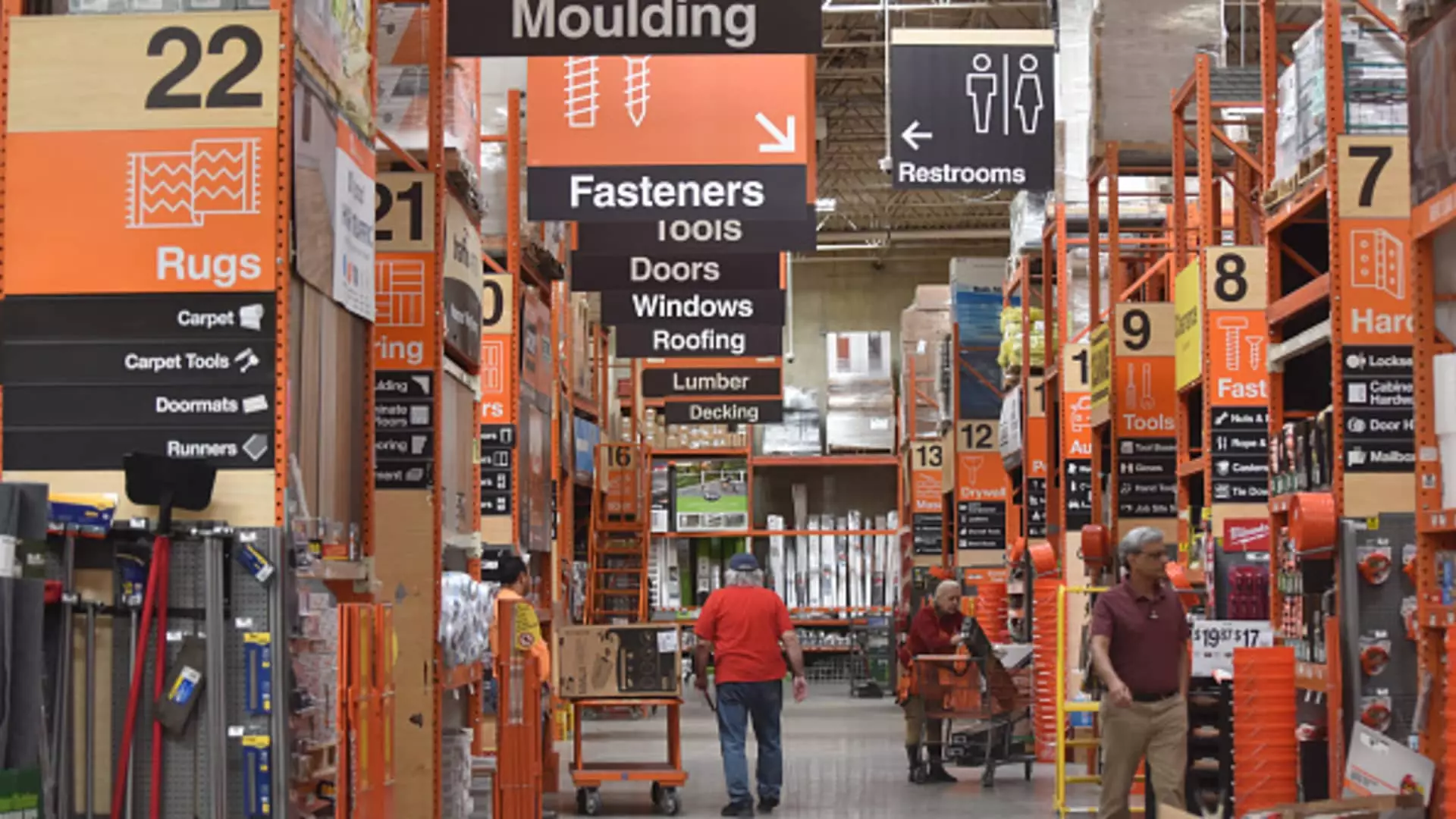Home Depot recently reported its quarterly financials for the period ending on October 27, showcasing better-than-expected results amid an often challenging economic landscape. The company achieved net sales of $40.2 billion, reflecting a robust year-over-year growth of 6.6%. This performance surpassed analysts’ expectations, who had projected sales of around $39.3 billion as per LSEG data. However, it’s imperative to delve deeper into these figures. Despite this apparent success, the adjusted earnings per share (EPS) dipped by 1.8% year-over-year, settling at $3.78, still outpacing the expected $3.64.
Moreover, the metric of same-store sales—a critical indicator that gauges revenue derived from stores open for at least a year—revealed a decline of 1.3% on a global scale, with U.S. counterparts boasting a mere 1.2% dip when compared to the same quarter last year. While initially discouraging, these figures fared better than analysts had anticipated, with expected declines sitting at 3.1% and 2.9% respectively. In the face of economic trials, for Home Depot to maintain a relatively stable position suggests a potential resilience.
The reality is that lingering high interest rates and economic uncertainties continue to exert pressure on the retail sector, particularly affecting large-scale remodeling projects—an area where Home Depot traditionally excels. CEO Edward Decker noted the ongoing struggle with larger home improvement projects, attributing this to the constrained borrowing environment driving home equity line of credit (HELOC) rates. Nevertheless, he hinted at a silver lining: the normalization of weather conditions has spurred increased consumer engagement with seasonal products and outdoor projects—a welcome change following the tumultuous storms and hurricanes that characterized the previous months.
Home Depot also indicated noteworthy trends within its monthly sales data, which depicted a decrease of 3.5% in August, 2% in September, followed by a resurgence of 1.4% in October—signs that consumer spending may be gradually shifting upwards. Such indicators provide hope that Home Depot may be moving towards stability, especially as interest rates begin to show signs of decline, potentially boosting the housing sector and associated home improvement expenditures.
A major takeaway from the report was the upward revision of guidance for the coming quarter, supporting the notion of a potential rebound as we transition into 2025. Home Depot now anticipates total sales growth of 4%, an increase from an earlier estimate of 2.5% to 3.5%. Additionally, the forecast for same-store sales has been revised to a decline of approximately 2.5%, compared to previous expectations ranging from 3% to 4%. This optimism is bolstered by a promising outlook for gross margins and operational metrics, specifically a maintained gross margin forecast of 33.5% alongside an adjusted operating margin refined to 13.8%.
Moreover, the acquisition of SRS Distribution—a company specializing in roofing and landscaping—has provided a significant boost for Home Depot. In its third quarter, SRS generated about $2.9 billion in sales, contributing to an overall projection of $6.4 billion through the fiscal year that it was integrated into Home Depot’s operations. Such strategic moves unequivocally position Home Depot for operational growth and market penetration despite economic tribulations.
Looking ahead, the competitive landscape remains dynamic, with companies like Lowe’s vying for a similar share of the market. Home Depot has taken the strategic step of bolstering its portfolio, evidenced by our decision to increase our holdings in the company—especially as we anticipate that upcoming Federal Reserve interest rate cuts could ignite further activity in the housing sector.
While Home Depot’s quarterly results initially reflect a mixed bag of performance trends, the underlying strategic adjustments and an optimistic sales outlook signal that the company is on the cusp of revitalization. The path to recovery rests heavily on external economic influences, and as interest rates fluctuate in the pursuit of stability, both consumers and investors alike may find fertile ground for potential growth within the housing market.

